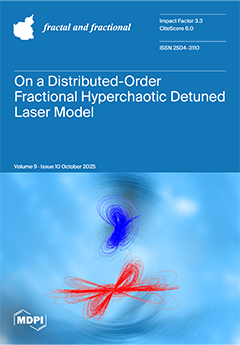We develop a convergence framework for Grünwald–Letnikov (GL) fractional and classical integer difference operators acting on sequences in fuzzy-paranormed (fp) spaces, motivated by data that are imprecise and contain sporadic outliers. Fuzzy paranorms provide a resolution-dependent notion of proximity, while statistical and lacunary statistical convergence downweight sparse deviations by natural density; together, they yield robust criteria for difference-filtered signals. Within this setting, we establish uniqueness of fp–
statistical limits; an equivalence between fp-statistical convergence of
(and its GL extension
) and fp-strong
p-Cesàro summability; an equivalence between lacunary fp-
statistical convergence and blockwise strong p-Cesàro summability; and a density-based decomposition into a classically convergent part plus an fp-null remainder. We also show that GL binomial weights act as an
convolution, ensuring continuity of
in the fp topology, and that nabla/delta forms are transferred by the discrete
Q–operator. The usefulness of the criteria is illustrated on simple engineering-style examples (e.g., relaxation with memory, damped oscillations with bursts), where the fp-Cesàro decay of difference residuals serves as a practical diagnostic for Cesàro compliance. Beyond illustrative mathematics, we report engineering-style diagnostics where the fuzzy Cesàro residual index correlates with measurable quantities (e.g., vibration amplitude and energy surrogates) under impulsive disturbances and missing data. We also calibrate a global decision threshold
via sensitivity analysis across
, where
is the integer difference order,
is the fractional order, and
is the Cesàro exponent, and provide quantitative baselines (median/M-estimators,
trend filtering, Gaussian Kalman filtering, and an
-stable filtering structure) to show complementary gains under bursty regimes. The results are stated for integer
m and lifted to fractional orders
through the same binomial structure and duality.
Full article





